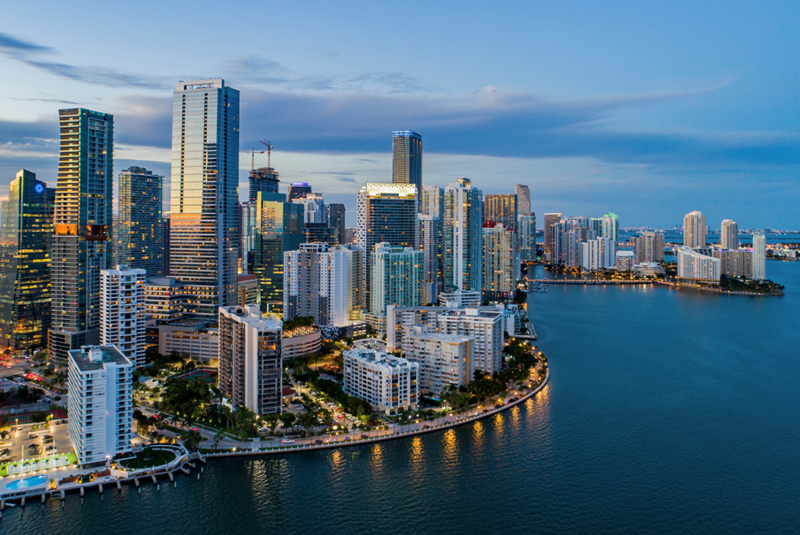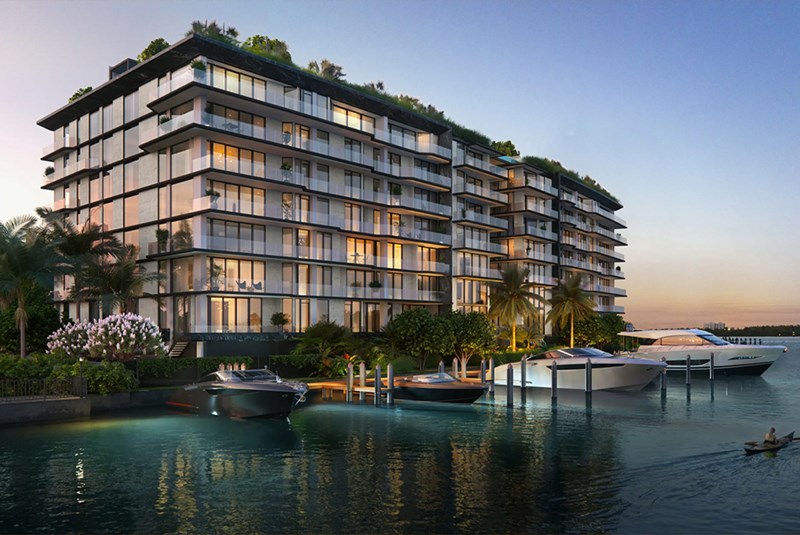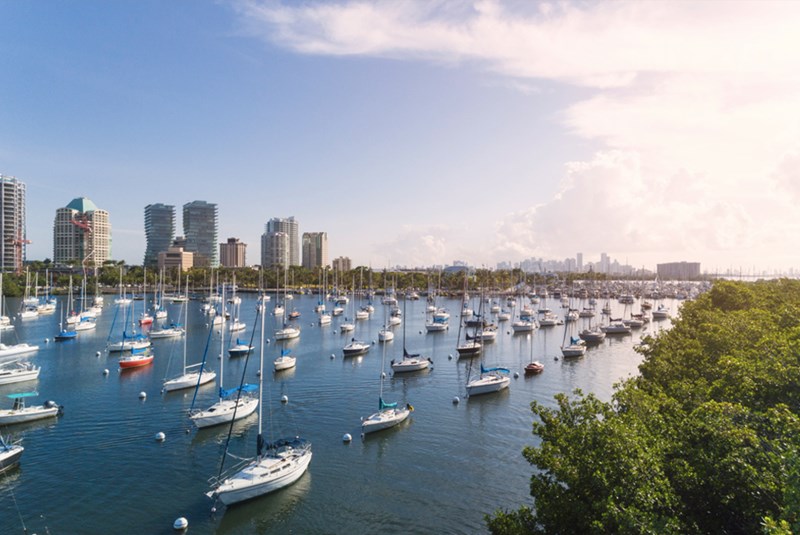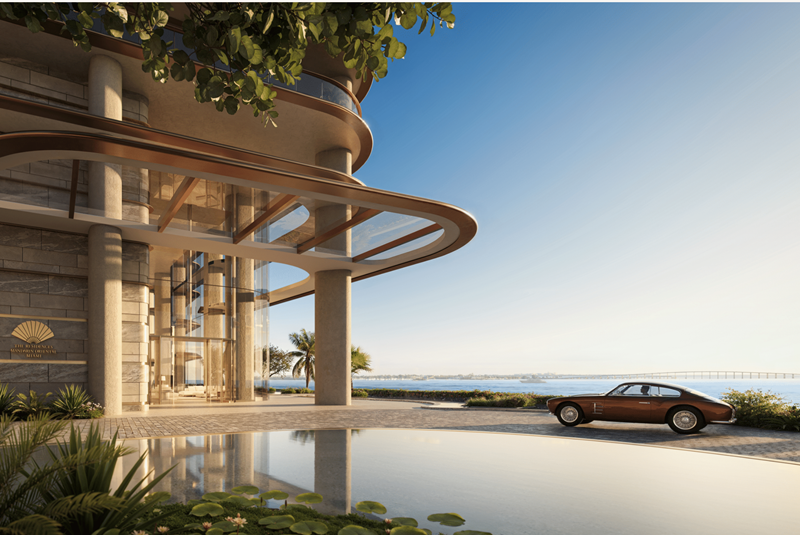Zaha Hadid and Miami: A Legacy That Lives On
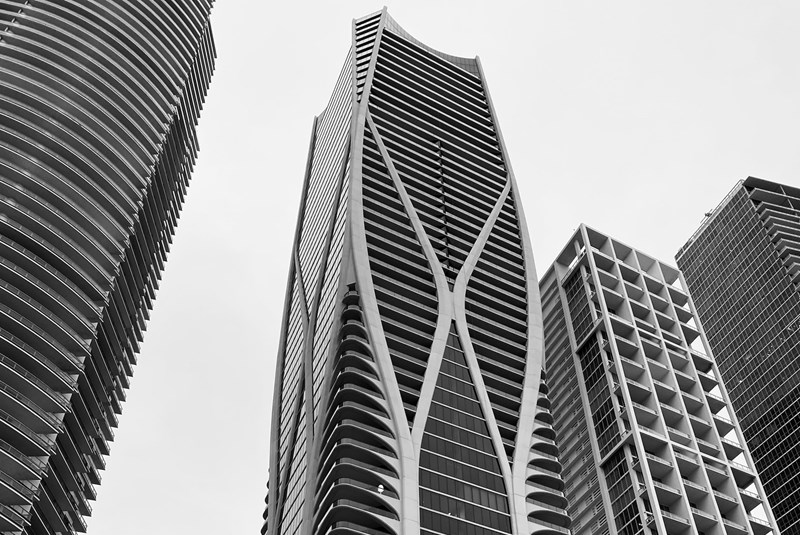
Aug 24, 2023 August 24, 2023
The grande dame of architecture, Zaha Hadid, shocked the world when she passed away on March 31, 2016, at just 65 years old. While undergoing treatment for bronchitis at Mount Sinai Medical Center in Miami, she suffered a heart attack that ended her life. Upon the news, her London-based design studio released an announcement that simply read: "Zaha Hadid was widely regarded to be the greatest female architect in the world today."
And while her work shines all over the world, Zaha Hadid and Miami forged a special bond towards the end of her life. In this blog, we uncover this special relationship, we remember her life and her genius work, and we’ll let you in on some lesser-known facts about the esteemed architect. Plus, we’ll share which buildings in Miami were designed by Zaha Hadid.
— Who was Zaha Hadid?
Zaha Hadid was a world-renowned architect famous for her radical deconstructivist designs. She was also the first woman awarded the Pritzker Architecture Prize, one of the most prestigious awards in architecture, which she won in 2004.
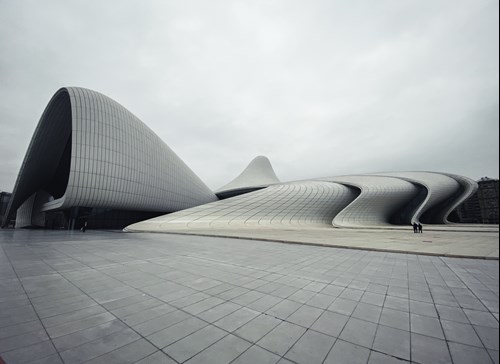
Heydar Aliyev Centre Baku
Born into a Muslim family in Iraq, Hadid attended a Catholic school for girls that was religiously diverse. Her father, an intellectual and politician, often took her to visit Sumerian cities, where she became exposed to a variety of buildings and landscapes. When the family was forced to leave Iraq as a result of the Iraq War, Hadid continued her education in Beirut and, later on, in the U.K.
She enrolled at the American University of Beirut to study mathematics before moving to London in 1972 to pursue architecture at the Architectural Association (AA) School, completing her Diploma in 1977. Following her graduation from AA, she worked as a partner at the Office of Metropolitan Architecture, founded and led by famed Dutch architect Rem Koolhaas, and taught at many acclaimed universities, such as Harvard Graduate School of Design, the University of Illinois at Chicago’s School of Architecture, and the Hochschule für Bildende Künste in Hamburg. She opened her own firm, Zaha Hadid Architects, in London in 1979.
— What was Zaha Hadid’s Design Style?
Hadid initially gained international recognition thanks to her winning entry for The Peak Leisure Club in Hong Kong, in 1983. In the years following, she cemented her reputation and style in what became known as “deconstructive architecture”, thanks to her geometric designs where movement and instability were protagonists.
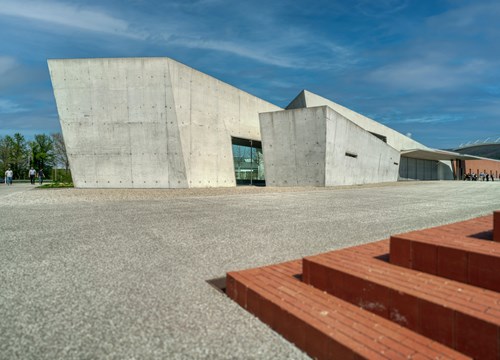
Vitra Fire Station in Germany
Most of these early designs never got built because they were considered too radical, futuristic, and gravity-defying, finding a better home in museum galleries around the world. However, in 1993, she had her first built work with the Vitra Fire Station in Germany, and soon after she began leaving her mark all over the globe.
Hadid’s career took a sharp turn after she designed the acclaimed Lois & Richard Rosenthal Center for Contemporary Art in Cincinnati, which was inaugurated in 2003, and became the first American museum designed by a female architect. This project cemented her reputation, making it evident that her designs were indeed buildable and beautiful, and her continued innovation soon catapulted her to “starchitect” status among international design circles.
— Five Fun Facts About Zaha Hadid
- Zaha was known as the “Queen of the Curve” and labeled as “The Lady Gaga of Architecture.”
- She also ventured into designing furniture, jewelry, footwear, bags, and interior spaces.
- She never featured a right angle in any of her building designs. One excellent example of this may be seen at the MAXXI Museum in Rome.
- Hadid was celebrated not only for her design work, but also for her success as an entrepreneur, and ranked among the World’s 100 Most Powerful Women. The first female as well as Arab architect to win the Pritzker Prize, Hadid became known for breaking the glass ceiling in the field of architecture. She was named Business Woman of the Year by Veuve Clicquot and appeared as #69 on Forbes’ list of the World’s 100 Most Powerful Women in 2008. Time Magazine featured her in their list of 100 Most Influential Thinkers of 2010.
- Hadid won an award every year from 2000 until her death in 2016. In fact, in a single year, she received 12 awards, breaking her own record. For two consecutive years, in 2010 and 2011, she won the coveted Stirling Prize, awarded by the Royal Institute of British Architecture and considered the most prestigious architectural honor awarded in the UK.
— Zaha Hadid’s Most Famous Buildings
Hadid’s firm, Zaha Hadid Architects, has designed 950 projects across 44 countries, growing from its launch in 1980 with only five employees to a team of over 400 staff members that work on a myriad of projects in all sorts of spaces, ranging from cultural to corporate and residential.

Guangzhou Opera House (2010) in Guangzhou, China
And although her career was tragically short-lived, Zaha Hadid managed to create almost 1,000 designs throughout her tenure as an architect, and her work has had an undeniable and significant impact on the world. Some of her most notable projects include:
- The Lois & Richard Rosenthal Center for Contemporary Art (2003) in Cincinnati, Ohio
- MAXXI - National Museum of the 21st Century Arts (2009) in Rome, which won the Stirling Prize awarded by the Royal Institute of British Architects in 2010
- Evelyn Grace Academy (2010), a secondary school in London awarded her her second Stirling Prize.
- Guangzhou Opera House (2010) in Guangzhou, China
- Heydar Aliyev Centre Baku (2012) in Azerbaijan, which won the London Design Museum’s Design of the Year in 2014
- London’s Aquatics Centre (2012) built for the 2012 London Olympics
- Jockey Club Innovation Tower (2014) for the Hong Kong Polytechnic University
- Al Wakrah Stadium in Qatar (2019) which hosted the 2022 FIFA World Cup.
The running thread shared by all of Hadid’s bold and beautiful designs is the enhancement of every city and location that each of these buildings lives in.
— Zaha Hadid and Miami
In her late years, Miami became an important place for Hadid for numerous reasons. Not only did she call the city home, owning a condo on The Residences at W South Beach that sold last year for almost $8 million, but it is also home to one of the last projects she worked on before her passing.
One Thousand Museum, a 62-story condo project in Downtown Miami, was one of her last designs and marks her first residential building in the Western Hemisphere. She started the project in 2013 and her architectural firm completed it in 2019, three years after Hadid’s death. This iconic building is instantly recognizable for it’s the exoskeleton that serves both as a design element and structural purposes, allowing the building to have fewer columns inside. This exoskeleton is quite rare and is why One Thousand Museum has the nickname of the “Scorpion Building.”
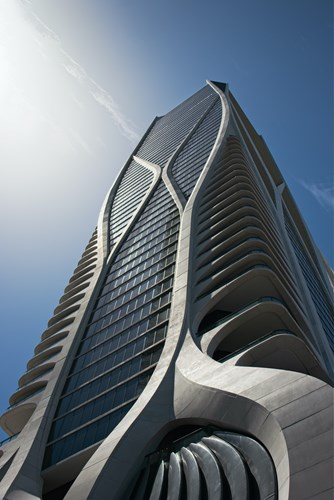
One Thousand Museum
The impact she and her firm have had on Miami goes beyond the projects for which they are responsible. Villa Miami, a new 58-story residential building, involves some of One Thousand Museum’s design team and takes inspiration from the project’s exoskeleton structure to propose a similar look and feel, but this time on the bay in the heart of Edgewater. This goes on to show that while Zaha Hadid’s untimely passing left a void in the world of architecture, her design influence lives on, influencing architecture and construction not only in Miami, but around the world.
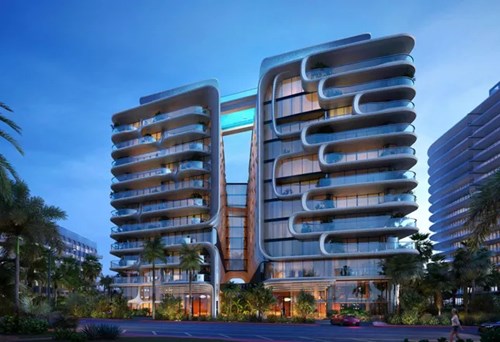
Courtesy of Zaha Hadid Architects
Most recently, Zaha Hadid Architects was selected to build another very important residential building in Miami, this time on the beach with a new design to replace the fallen structure at Champlain Towers site in Surfside, after its disastrous collapse in 2021. The proposed version, which will be both a condo residence and a sort of living memorial, retains the architectural language of the late architect’s vision with a facade marked by curved lines and asymmetrical structures.
If you’d like to know more about buying into or living in one of Zaha Hadid’s buildings in Miami, please call us and we will be happy to provide you with more details and available residences.
Cover: Zaha Hadid’s iconic architecture pieces in Miami, FL.
Share your thoughts with us
Your Miami Condo Awaits
Recent Posts
